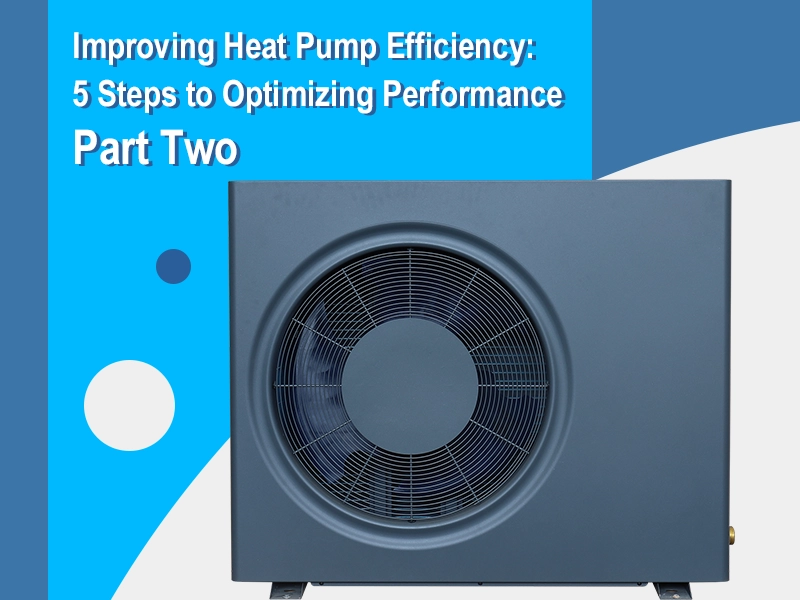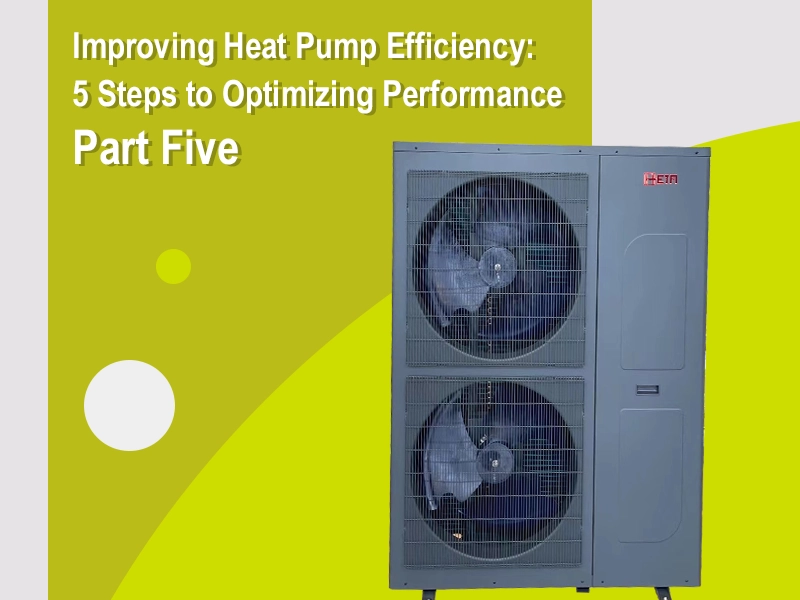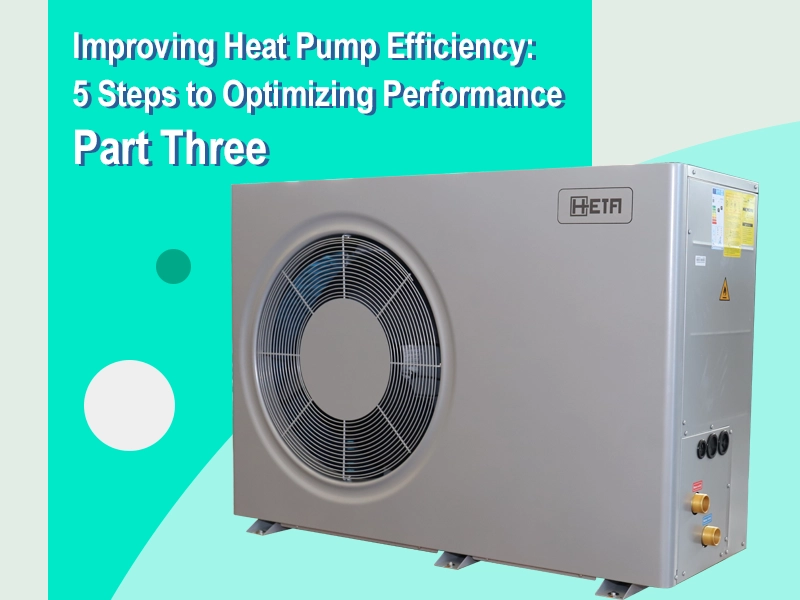In the pursuit of energy efficiency, maximizing the performance of your heat pump becomes critical. As a trusted authority in the industry, we provide a comprehensive guide to improving the efficiency of your heat pump, ensuring optimal performance and energy savings. Follow these five steps to unlock the full potential of your heat pump system:
1.Understand the operating principles of heat pumps
2.Implementing Maintenance Best Practices
4.Investing in Professional Upgrades

Part 2:Implementing Maintenance Best Practices
Outline maintenance best practices to maintain the efficiency and longevity of your heat pump system. This includes regularly cleaning filters and coils, checking refrigerant levels and ensuring proper air flow.
Heat Pump System Maintenance Best Practices:
●Regular cleaning of filters:
– Frequency: Once a month during peak usage periods (e.g., summer and winter), or as recommended by the manufacturer.
– Procedure: Remove and clean air filter according to manufacturer’s instructions. Use a vacuum cleaner or clean with mild detergent and water, then dry completely before reinstalling.
●Coil cleaning:
– Evaporator coil:
– Frequency: Annually, or more frequently if significant accumulation of dust and debris is observed.
– Procedure: Use a soft brush or a vacuum cleaner with a soft brush attachment to gently remove dust and debris from the surface of the coil. Avoid using too much force to prevent damage.
– Condenser coil:
– Frequency: Annually, or more frequently if the outdoor unit is exposed to large amounts of dirt or debris.
– Procedure: Remove debris such as leaves and grass clippings from around the outdoor unit. Use a garden hose to gently rinse the coil from top to bottom, being careful not to damage the fins.
●Refrigerant level check:
– Frequency: Once a year, preferably before peak usage periods.
– Procedure: Check the refrigerant level using a refrigerant pressure gauge. Refer to manufacturer specifications for recommended operating pressure range. If the level is low, contact a qualified HVAC technician to check for leaks and refill the refrigerant as needed.
●Ensure proper air flow:
– Outdoor unit:
– Frequency: Regularly, especially after storms or garden activities.
– Procedure: Clear debris such as leaves, twigs, or snow from around the outdoor unit to ensure unobstructed air flow.
– Indoor unit:
– Frequency: Once a year or as needed.
– Procedure: Make sure supply and return air vents are not blocked by furniture, curtains, or other objects. Use a vacuum cleaner or dust vents to remove any buildup that may be blocking air flow.
●Check electrical components:
– Frequency: Once a year or according to manufacturer’s recommendations.
– Procedure: Inspect electrical connections, wires, and terminals for signs of wear, damage, or corrosion. Tighten loose connections and replace any damaged components as necessary.
●Lubricate moving parts:
– Frequency: Once a year or according to manufacturer’s recommendations.
– Procedure: Lubricate motor bearings and other moving parts using an appropriate lubricant according to manufacturer specifications.
●Professional maintenance:
– Frequency: Once a year.
– Process: Schedule professional maintenance services with a qualified HVAC technician. They can perform a complete inspection, cleaning and adjustment of the entire heat pump system to ensure optimal performance and identify any potential issues before they escalate.
By following these maintenance best practices, homeowners can maintain the efficiency and longevity of their heat pump systems, ensuring consistent performance and energy savings year-round.
The importance of following the manufacturer’s recommended maintenance schedule to mitigate potential problems and optimize system performance. Here’s why:
●Warranty Protection: Manufacturers often tie warranties to following a recommended maintenance schedule. Failure to follow these guidelines may void the warranty, leaving the owner responsible for costly repairs or replacements.
●Maximizing efficiency: Regular maintenance helps keep your heat pump system operating at peak efficiency. Clean filters, coils and proper air flow ensure optimal heat transfer and air flow, reducing energy consumption and utility costs.
●Prevent breakdowns: Regular inspections allow technicians to identify and resolve minor issues before they escalate into major problems. This proactive approach helps prevent unexpected breakdowns and ensures uninterrupted comfort for owners.
● Extended life: Following a maintenance schedule can extend the life of your heat pump system by addressing wear and tear early and keeping components in good condition. This helps homeowners maximize their investment and postpone the need for costly replacements.
●Safety Guarantee: Regular maintenance inspections include checking electrical connections, refrigerant levels and other critical components. Ensuring these elements are functioning properly reduces the risk of safety hazards such as electrical fires or refrigerant leaks.
●Best Performance: Manufacturer-recommended maintenance schedules are designed based on extensive testing and research. Following these plans ensures that your heat pump system operates as expected, providing consistent and reliable performance throughout its life.
In summary, it is critical for homeowners to follow the manufacturer’s recommended maintenance schedule to mitigate potential problems, optimize system performance, and protect their investment in their heat pump system. With proactive maintenance, owners can enjoy greater efficiency, reliability and long-term peace of mind.



